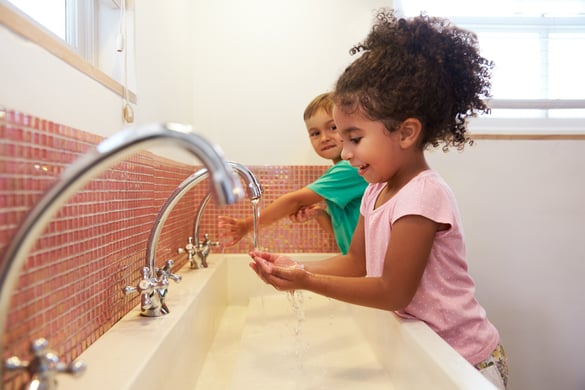Rapid Detection of Respiratory Illness Can Slow Down Transmission & Hasten Preventive Action.
The human respiratory system – the nose, throat and lungs -- is essential to life. It is open to the outside world to let air in and carbon dioxide out.1 But the respiratory tract is also a point of entry for germs that can cause illness, particularly among children who have not yet built immunity to common viruses and bacteria. That’s why back-to-school season usually leads to higher incidences of influenza, asthma, sinusitis, bronchitis, croup, strep throat and pneumonia.

Preventing Transmission of Respiratory Illnesses
When children are in proximity to each other, they can spread respiratory illnesses.2 For example, the flu virus is believed to spread mainly from person to person through droplets that come from the nose and mouth when a sick person coughs, sneezes or talks. The virus may also spread when people touch something with flu virus on it, and then touch their eyes, nose or mouth.
Separating well children from those with a respiratory illness can slow the spread. Common
During a flu epidemic, children who are not sick should stay at least 3 feet away from those who are sick. During epidemics, parents and teachers should seek alternative ways for children to participate in gatherings, such as watching them online.6 Another prevention method – hand-washing -- lowers the amount of flu virus that may spread when shaking hands or touching surfaces and objects. If soap and water are not available, children can use hand sanitizer with at least 60% alcohol. They should be taught the importance of washing their hands before touching their eyes, nose, or mouth. Covering coughs and sneezes with a tissue helps can help prevent the spread of the flu virus through the air and on hands.
Probably the best protection against the influenza virus is vaccination. Getting children vaccinated protects them and those with whom they come into contact
Probably the best protection against the influenza virus is vaccination.7 Getting children vaccinated protects them and those with whom they come into contact. Nasal spray vaccines are quick and painless.
Environmental Factors
Environmental interventions for schoolchildren include routine cleaning of frequently touched surfaces and objects, such as toys, refrigerator handles, desks and doorknobs.8 Soap and water will remove the flu virus. A bleach-and-water solution or disinfectant with a label that says “EPA approved” may also be used.9
Rapid Antigen Tests
With multiple co-circulating respiratory viruses, diagnostic testing can guide treatment and management to improve patients’ clinical course and outcomes. Sekisui Diagnostics offers several options:
The OSOM® respiratory infection portfolio consists of a broad range of tests for some of the most common causes of respiratory illness, such as COVID-19, Flu A&B, RSV and Strep A. These are essential tests for healthcare providers as they are easy-to-use and produce immediate results, which improves patient management, while slowing the spread of highly contagious disease.
The majority of these tests are CLIA-waived and are used in a variety of healthcare settings, including physician office laboratories, urgent care clinics, hospitals, and more. All tests are proudly manufactured in the United States and many of them include QC Inside®, which means each kit will come with two additional tests at no additional charge for external Quality Control testing.
Resources
- 7 common childhood respiratory diseases, Children’s Hospital of Orange County
- Parents of Childcare and K-12 Students, Centers for Disease Control and Prevention
- Flu Symptoms & Diagnosis, Centers for Disease Control and Prevention
- Guidance for School Administrators to Help Reduce the Spread of Seasonal Influenza in K-12 Schools, Centers for Disease Control and Prevention
- Ibid
- Parents of Childcare and K-12 Students, Centers for Disease Control and Prevention
- 7. Ibid
- Environmental NPIs: Surface Cleaning, Centers for Disease Control and Prevention
- Parents of Childcare and K-12 Students, Centers for Disease Control and Prevention
- Rapid Tests for Influenza, Respiratory Syncytial Virus, and Other Respiratory Viruses: A Systematic Review and Meta-analysis, Clinical Infectious Diseases



Share Article